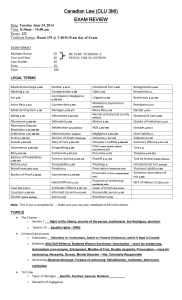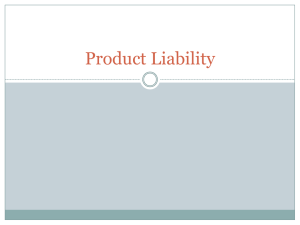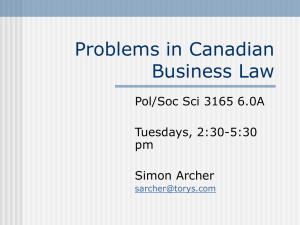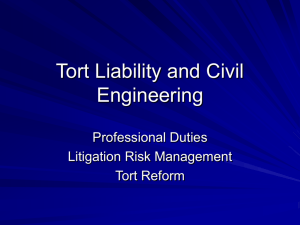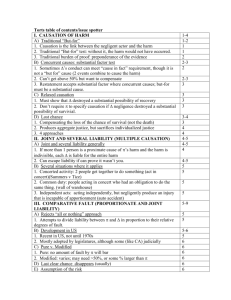here
advertisement
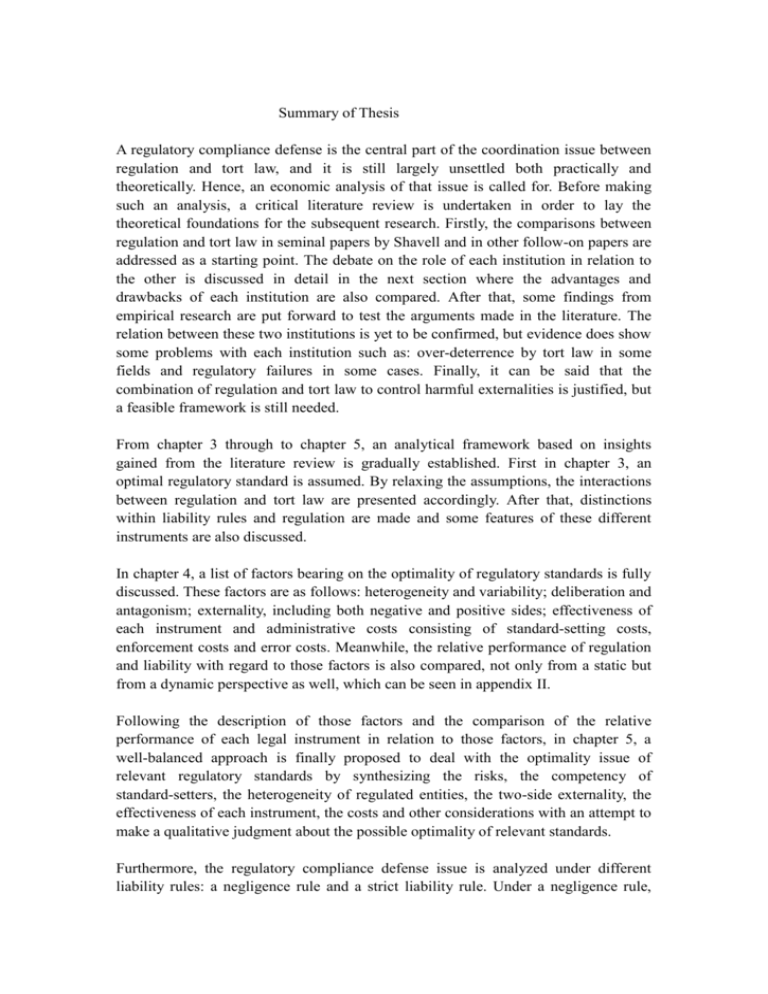
Summary of Thesis A regulatory compliance defense is the central part of the coordination issue between regulation and tort law, and it is still largely unsettled both practically and theoretically. Hence, an economic analysis of that issue is called for. Before making such an analysis, a critical literature review is undertaken in order to lay the theoretical foundations for the subsequent research. Firstly, the comparisons between regulation and tort law in seminal papers by Shavell and in other follow-on papers are addressed as a starting point. The debate on the role of each institution in relation to the other is discussed in detail in the next section where the advantages and drawbacks of each institution are also compared. After that, some findings from empirical research are put forward to test the arguments made in the literature. The relation between these two institutions is yet to be confirmed, but evidence does show some problems with each institution such as: over-deterrence by tort law in some fields and regulatory failures in some cases. Finally, it can be said that the combination of regulation and tort law to control harmful externalities is justified, but a feasible framework is still needed. From chapter 3 through to chapter 5, an analytical framework based on insights gained from the literature review is gradually established. First in chapter 3, an optimal regulatory standard is assumed. By relaxing the assumptions, the interactions between regulation and tort law are presented accordingly. After that, distinctions within liability rules and regulation are made and some features of these different instruments are also discussed. In chapter 4, a list of factors bearing on the optimality of regulatory standards is fully discussed. These factors are as follows: heterogeneity and variability; deliberation and antagonism; externality, including both negative and positive sides; effectiveness of each instrument and administrative costs consisting of standard-setting costs, enforcement costs and error costs. Meanwhile, the relative performance of regulation and liability with regard to those factors is also compared, not only from a static but from a dynamic perspective as well, which can be seen in appendix II. Following the description of those factors and the comparison of the relative performance of each legal instrument in relation to those factors, in chapter 5, a well-balanced approach is finally proposed to deal with the optimality issue of relevant regulatory standards by synthesizing the risks, the competency of standard-setters, the heterogeneity of regulated entities, the two-side externality, the effectiveness of each instrument, the costs and other considerations with an attempt to make a qualitative judgment about the possible optimality of relevant standards. Furthermore, the regulatory compliance defense issue is analyzed under different liability rules: a negligence rule and a strict liability rule. Under a negligence rule, three possible situations can be further distinguished: 1) the case of regulatory standards likely to be optimal or superior; 2) the case of regulatory standards likely to be less than optimal or minimal; and 3) the case of regulatory standards likely to be too stringent. Under situations 1) and 3), in principle, a full defense should be granted by courts to exempt a complying injurer from being held liable. Under situation 2), on the other hand, such a defense would not, in general, preclude the complying injurer from liability. It’s also argued that, even under situations 1) and 3), liability can still play an important role in the following aspects: to facilitate the enforcement of public regulation; to disclose unanticipated risks or new risks; to check the accuracy of relevant information and the behavior of relevant public authorities. Under a strict liability rule, the regulatory compliance defense issue is not as significant as under a negligence rule since courts will not set up their own standards. Nevertheless, the proposed framework is still meaningful as to the use of other legal concepts like punitive damages under a strict liability regime, which is discussed in chapter 8. In chapter 6, three easy or extreme types of torts are used as examples to show the applicability of the proposed framework. In the vaccine and nuclear accident cases, it has been argued that regulation should take a dominant role in controlling the risks under consideration, and liability in the form of strict liability rule can still play a role for manufacturing defects in the vaccine case, and for non-substantive losses in the nuclear accident case. As for nuisance, liability in the form of a negligence rule should be given priority to control this kind of conduct. Regulation, on the other hand, can complement liability in some specified situations. After the process of constructing a framework in the previous parts of this thesis, from chapter 7 onwards, the proposed approach is put into the legal context to enable courts to make full use of such a framework. In chapter 7, how courts treat a regulatory compliance defense is discussed in detail whereby factors bearing on the optimality of relevant standards have been transformed into legal terms if necessary and a non-conclusive list of considerations has been proposed in order to facilitate a qualitative decision making by the courts. In addition, how to assign the burden of proof between two parties is also discussed and some comments are also made with regard to recent changes in some states on this matter. In the last section of this chapter, an exceptional treatment of examples of unlawful conduct by an informed party is suggested with some justifications. In chapter 8, three related legal doctrines or concepts are discussed under the proposed framework. The first one is the preemption doctrine, which is primarily dealing with the relationship between federal and state laws with the similar consequence of precluding injurers from being held liable as a regulatory compliance defense does. Nevertheless, the wide and inconsistent use of such a doctrine has been criticized and some suggestions have been made as well. The next doctrine is the negligence per se rule, by which it is easier to hold a violating injurer liable in courts. In this thesis, the use of such a doctrine has been justified under the proposed framework: it will enhance the deterrence level of liability at relatively low cost. The last concept is punitive damages, the wide use of which has been criticized fiercely. In this thesis, the use of punitive damages has been distinguished in two different situations: punitive damages having the effect of over-deterrence when injurers are complying; and punitive damages as an additional incentive mechanism when injurers are non-complying. For the latter case, the smart use of punitive damages might be efficient by giving an added incentive to those potential injurers to comply with relevant regulatory standards. It is argued in the final part of this thesis that the suggested framework should be taken as a starting point, not as a final solution to all types of torts and the application of this framework should always be carried on with attention paid to particular features of the tort cases under discussion.




